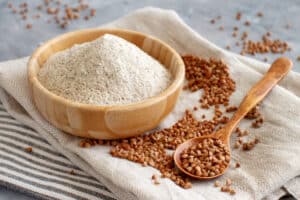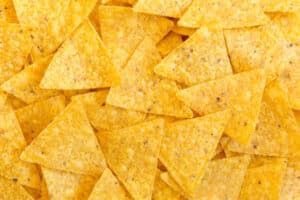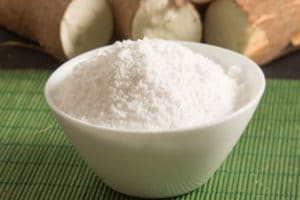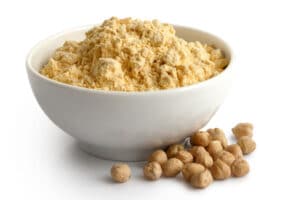One of the best parts of cooking is improvisation. While finding substitutes for specific products can be incredibly challenging, there are numerous options to choose from when looking for a teff flour replacement.
What is the best teff flour substitute? Quinoa flour is the most similar teff flour replacement in baking cakes, cookies, and other sweet treats.
Although unfamiliar to many, teff flour is gaining more traction in health food markets in the United States and Canada. Teff is an annual Ethiopian grain with seeds. These seeds are pulverized into a fine powder and become flour. The grains are known for their diverse nutritional profile, containing high amounts of magnesium and calcium, among dozens of other nutrients.
Teff flour is ideal for making bread, cakes, and cereals. However, many bakers globally may not have access to teff flour. Alternatives that match teff flour’s flavor profile, nutrient-level, and gluten-free status are available in several stores or online.
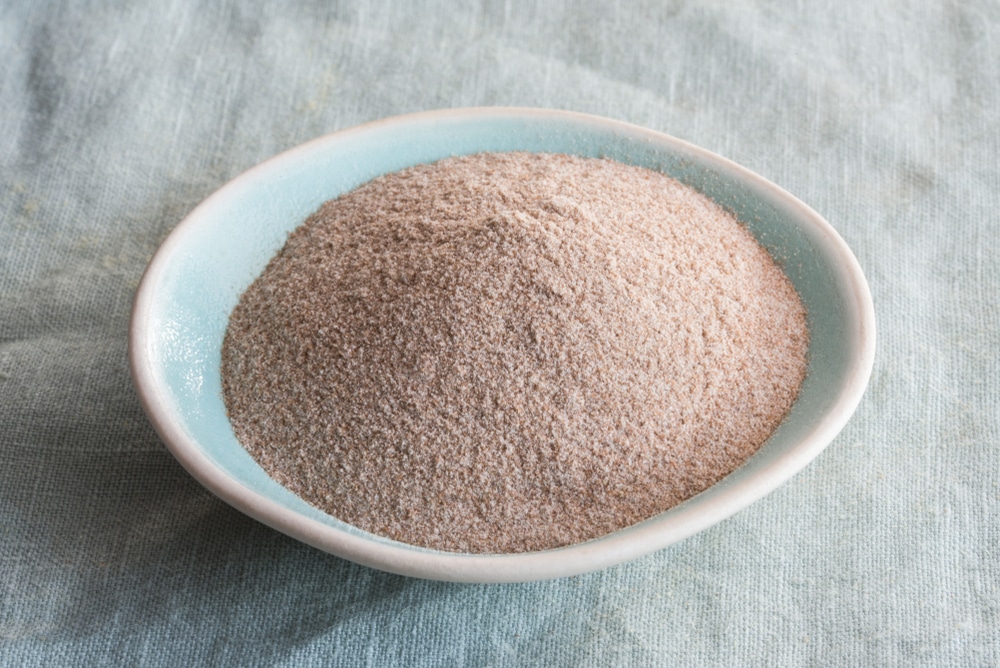
Top 5 Teff Flour Alternatives
These alternatives for teff flour are not only delicious but can be found easily in local supermarkets or online.
Often whole-food stores and cultural markets will carry many of the items listed in their inventory. Online options are also available and typically ship quickly.
While your recipe may not taste as was intended, these teff flour substitutes can make for a delicious meal, regardless.
Quinoa Flour
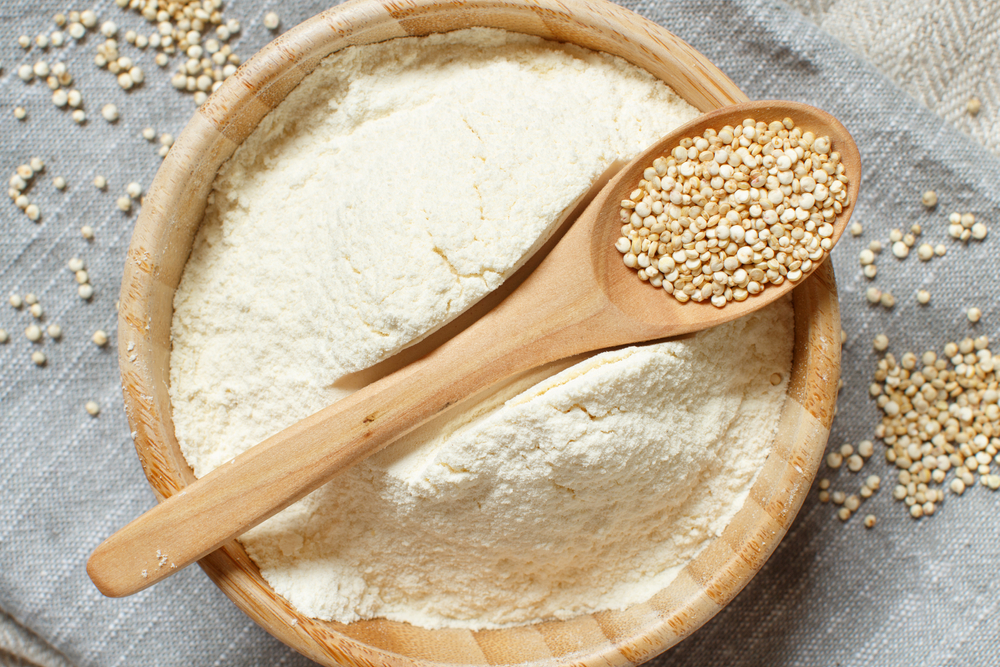
Quinoa flour is much easier to find on many health-food market shelves than teff flour. Additionally, it is the most similar grain on the market to teff grains. Perfect for baking cakes, cookies, and other sweet treats, quinoa flour offers a nearly identical flavor palette to teff flour.
Quinoa flour can easily be made at home when the pre-made flour is unavailable in stores. Grind one to two cups of quinoa until they become a powder-like substance, then roast the quinoa powder at 220 degrees Fahrenheit for two to three hours.
When using quinoa flour in place of teff flour, you may add the same amount of flour called for in the recipe. For example, recipes that call for one cup of teff flour can use one cup of quinoa flour and have results that almost mirror that of teff flour.
Furthermore, quinoa flour can prove incredibly beneficial for those looking to manage their weight, control diabetes, and improve cardiovascular conditions. Consider using quinoa four, or make your own, to substitute teff flour to reap the same nutritionally-dense benefits.
Tapioca Flour
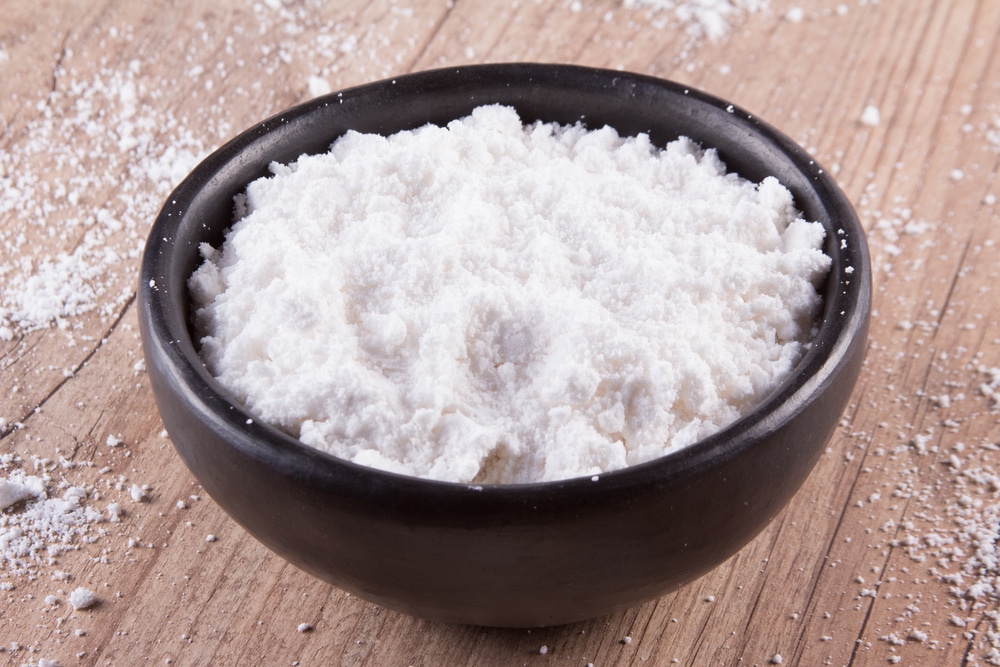
Tapioca flour is also called tapioca starch and is a product derived from the cassava root. This root is a significant part of diets in South America and other tropical regions.
While also having an incredibly diverse flavor profile, tapioca starch is rife with nutrients and health benefits.
It is similar to teff flour because both are gluten-free and offer the same vitamins. Like teff, tapioca flour contains calcium, which is necessary for bone development and the prevention of bone diseases.
However, unlike teff flour, tapioca flour is very high in iron, which helps move oxygen throughout the blood and body.
Tapioca flour can have a significantly positive impact on health, including preventing cardiovascular disease, controlling diabetes, and keeping the digestive system healthy.
When replacing teff flour with tapioca flour, use the suggested amount of flour called for in the recipe. There is no need to change or adjust anything.
Tapioca flour is ideal since it tastes neutral and blends well with savory and sweet recipes. Still, baked goods tend to do better with tapioca flour than fried foods.
Rice Flour
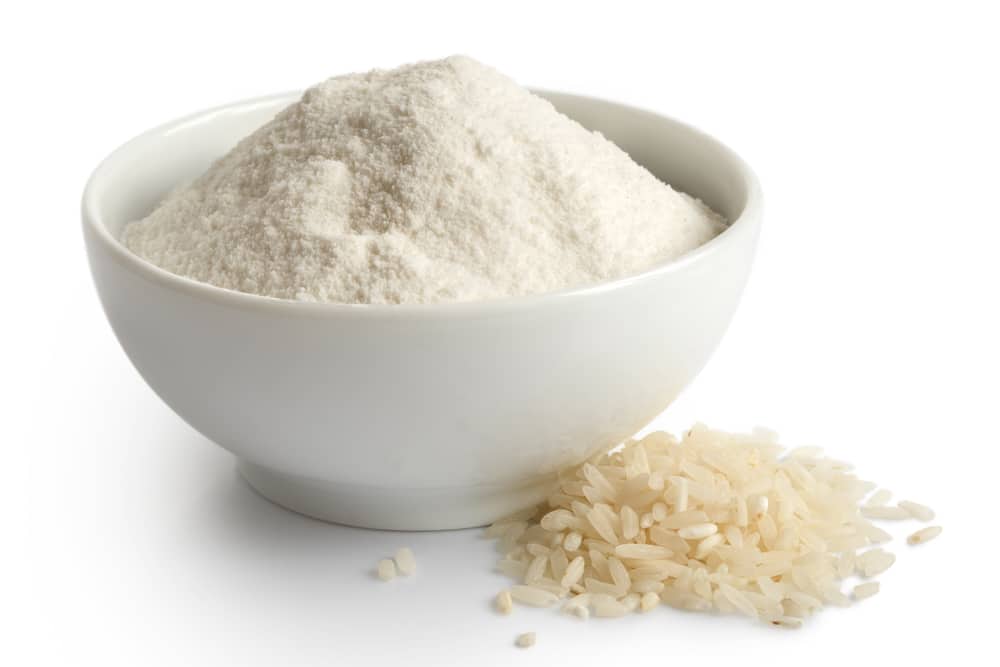
Not only is rice flour incredibly versatile, but it also does incredibly well with both savory and sweet foods. Bread, pasta, or sweets are perfect uses for rice flour.
While teff flour is excellent because it has more nutrients, rice flour still has an impressive set of health benefits like high fiber and protein content.
As with teff flour, rice flour is gluten-free and can assist in the search for foods that fit this dietary need.
There are two types of rice flour:
Brown rice flour has more overall nutrients, but it is slightly harder to grind down and use. Bakers and chefs may have to grind their brown rice flour down just a little more to reach the needed consistency and texture for their recipe.
Nevertheless, the nutrients will be more adjacent to that of teff flour.
Rice flour, like quinoa flour, can be made at home by grinding down uncooked rice until they reach a fine powder consistency. Unlike quinoa flour, there is no need to toast or bake the rice flour. It is simply ready to use.
When replacing teff flour with rice flour, you may use the indicated amount of flour called for in the recipe. However, if using brown rice flour, be careful of the dryness of the meal. You may need less flour if the ingredients are hard to maneuver.
Sorghum Flour
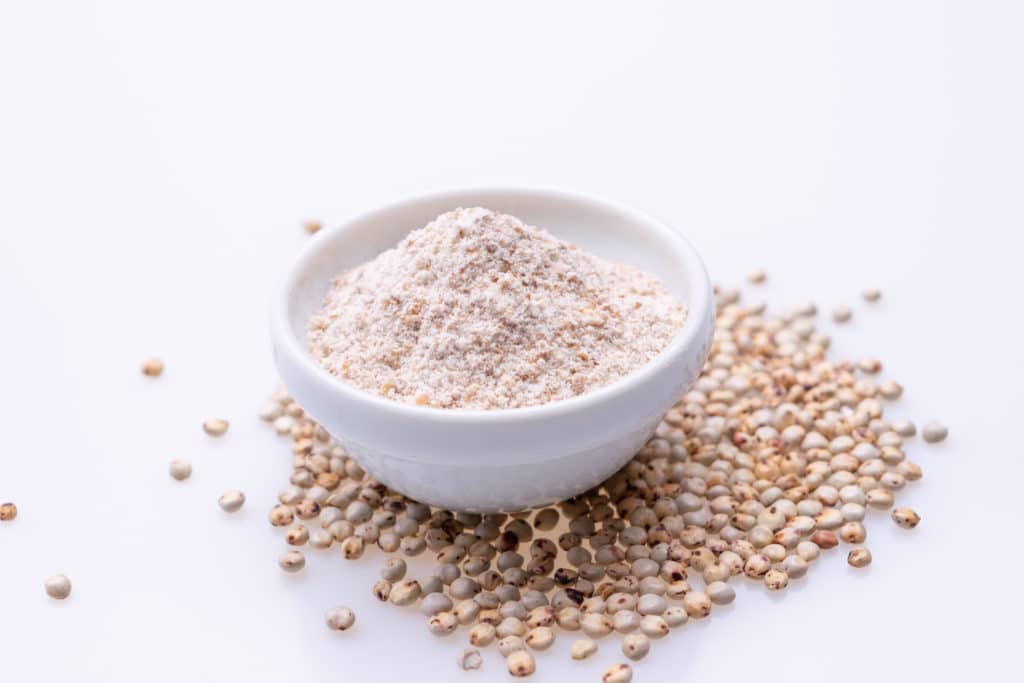
Another fantastic alternative to teff flour is sorghum flour, a product of India. This flour works to substitute teff flour when making pancakes, thick stews, and flat types of bread. It’s an ancient wheat that has been available for thousands of years and has many uses and recipes.
Sorghum flour works well in baking sweet treats and cooking savory meals. Additionally, sorghum flour offers several health benefits. Chefs around the world can get higher fiber and more antioxidants that aid in preventing heart disease and inflammatory trouble by substituting teff with sorghum flour.
Like teff flour, sorghum flour is gluten-free and has a mild taste that works well with all foods. Cooks are encouraged to use the same amount of flour as the recipe calls for when using sorghum as a substitute.
Additionally, you can combine several gluten-free flours to create a well-rounded and versatile combination of nutrients and health benefits.
One combination of tapioca flour, rice flour, sorghum flour, and quinoa flour can boost flavor and health. Whatever gluten-free combination you choose, you’ll be able to create a healthy flour alternative that works best for you.
Oat Flour
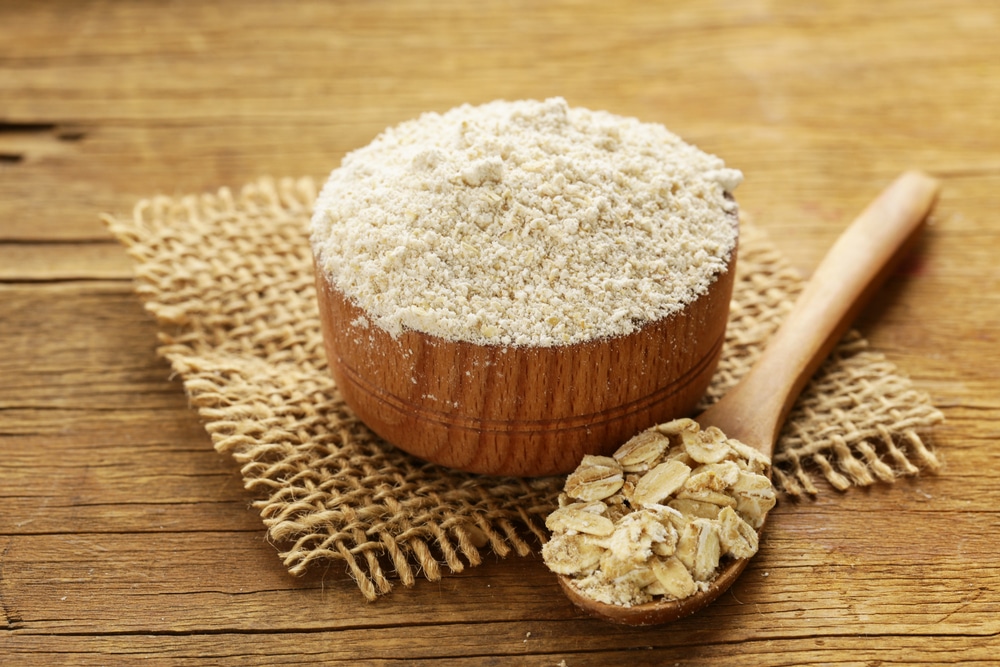
While oat flour is the least similar to teff flour on our list, it still has its benefits and can offer a recipe with plenty of bonuses. Just like teff, oat flour is gluten-free and has a similar, nutty flavor profile.
Oat flour can assist in weight loss and preventing cardiovascular disease and is an excellent source of fiber and protein. Moreover, oat flour is easy to make at home.
This easy method requires grinding one cup of rolled oats until they become a fine powder. Like rice flour, oats do not need to be toasted or cooked.
When using oat flour as a teff flour substitute, use the flour in small amounts, slowly folding it into the rest of the mixture. Oat flour is very starchy, and you may not require as much as you would teff flour.
Oat flour is perfect for sweets like cookies and cakes. For example, oat flour recipes often combine cranberries and maple syrup. Besides deserts, it is incredibly versatile and can make vegetarian meatballs and other savory meals.
Frequent Questions
We’ve put together answers to three of the most commonly asked questions asked about teff flour substitutes.
Is teff flour the same as wheat flour?
No. While teff is a type of wheat grain, teff flour differs from usual wheat flour because it is gluten-free. Teff is a whole grain, which provides more nutrients and vitamins while maintaining its diverse nature in recipes.
With a sweet and somewhat nutty flavor, teff is an ideal substitute for other wheat flours since it is very similar.
Can I use regular flour instead of teff flour?
No. Regular flour contains gluten and will change the recipe if substituted. What’s more, regular flour can cause bread to rise and the texture of foods to adjust if used.
The most optimal substitute for teff flour is quinoa flour because teff and quinoa come from nearly identical plants.
Is ragi flour the same as teff flour?
Ragi flour and teff flour are closely related, but they are not identical. Teff flour originates from Ethiopia, while ragi flour comes from India. Both are gluten-free alternatives to regular flour, but they are not the same.
Conclusion
Not only can these teff flour substitutes create a satisfying recipe, but they will have the whole house smelling heavenly. In addition, you’ll broaden your baking or cooking skills by using one of these lesser-known ingredients.
Shop around for these teff flour substitutes and find one that matches your recipe needs. Whether baking, cooking, or frying, there is a gluten-free and healthy alternative for teff flour waiting for you.



